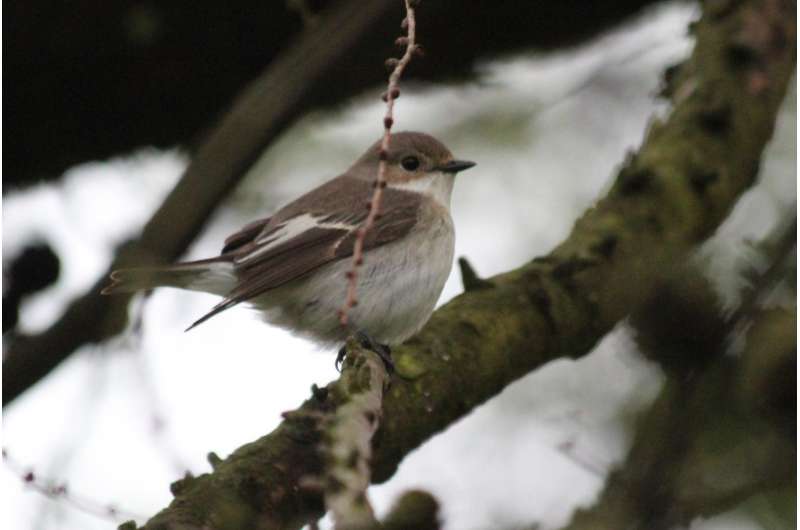Migratory birds can be taught to adjust to climate change, study shows

One result of climate change is that spring is arriving earlier. However, migratory birds are not keeping up with these developments and arrive too late for the peak in food availability when it is time for breeding. By getting the birds to fly a little further north, researchers in Lund, Sweden, and the Netherlands have observed that these birds can give their chicks a better start in life.
Global warming is causing problems for birds in Sweden and elsewhere. Warmer springs mean that caterpillars hatch, grow and pupate earlier compared with just a few decades ago. This has consequences for birds that cannot eat caterpillars that have entered the pupal stage.
Therefore, when the food supply runs out at an ever earlier time in the spring, more and more chicks starve during the breeding season. This is a big problem for migratory birds that spend winters in Africa, as they do not know how early spring arrives in Sweden. Could the problem be solved if the migratory birds simply came home and started breeding earlier?
"It seems that our non-migratory birds are doing this to a certain extent. But, of course, they are present and can feel how early spring will come. We thought that perhaps the migratory birds could fly further north until they find a place with suitable well-developed caterpillars," says Jan-Åke Nilsson, biology researcher at Lund University in Sweden.
To test this in practice, the researchers decided to help some pied flycatchers along the way. The research is published in the journal Nature Ecology & Evolution.
The biologists caught pied flycatchers that had arrived prior to breeding in the Netherlands. The birds were then driven during the night to Vombs Fure, an area of pine forest outside Lund in Skåne, where they were released. The peak of caterpillar availability in Skåne is about two weeks later than in the Netherlands—a distance of around 600 kilometers that a pied flycatcher could cover in just two nights.
"The birds that were given a lift from the Netherlands to Skåne synchronized very well with the food peak. As they started to breed about 10 days earlier the 'Swedish' pied flycatchers they had a dramatically better breeding success than the Swedish ones as well as a better success than the pied flycatchers that remained in the Netherlands," says Jan-Åke Nilsson.
In addition, it was shown that the chicks of the Dutch pied flycatchers that had received migration assistance did not stop in the Netherlands when they returned after their first spring migration. Instead, they continued on to the area of pine forest outside Lund where they were born.
Furthermore, they arrived earlier than the Swedish pied flycatchers and thereby had more well-fed chicks at Vombs Fure the year after the researchers gave the pied flycatchers a helping hand to find Skåne.
"The number of small birds, particularly migratory birds, has decreased drastically throughout Europe. By flying a little further north, these birds, at least in principle, could synchronize with their food resources and there is hope that robust populations of small birds can be maintained, even though springs are arriving ever earlier," concludes Jan-Åke Nilsson.
More information: Koosje P. Lamers et al, Adaptation to climate change through dispersal and inherited timing in an avian migrant, Nature Ecology & Evolution (2023). DOI: 10.1038/s41559-023-02191-w
Journal information: Nature Ecology & Evolution
Provided by Lund University Hungry birds as climate change drives food 'mismatch'
No comments:
Post a Comment